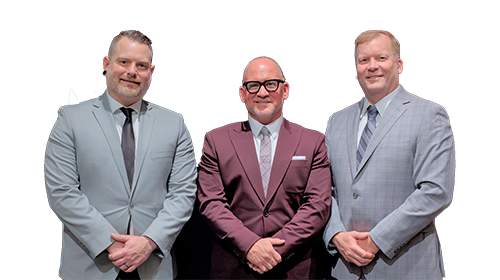Permanency
Caseworkers are responsible for implementing the Court approved plan for children who have been removed from their homes and placed into Agency custody. Placement for a child may include any of the following settings: kinship care; traditional foster care; community based residential host-homes; group homes; residential treatment facilities or shelter care placement.
In keeping with the Adoption and Safe Families Act (ASFA) of 1997, permanency planning for children begins as soon as the child enters substitute care. The Agency is dedicated to finding family resources for children and must notify all relatives when a child enters placement, in compliance with Family Finding expectations.
Substitute care is meant to be temporary. The Agency caseworkers must work diligently to ensure that the current permanency goal is achieved in a timely manner. These goals are (in order): reunification; adoption; subsidized permanent legal custodianship; release to kin and another planned permanent living arrangement.
When a child enters placement, the Agency and the Court determine what type of placement is appropriate for the child, based upon their need for structure, supervision, counseling and education. The least restrictive settings are the foster care levels.
Foster homes are licensed on an annual basis. These homes include kinship homes and traditional foster homes. Families identified either through the family finding process or other engagement strategies, may request to be licensed as a foster care provider for their minor relative. If approved, the child may reside with their kinship resource while in Agency custody. Traditional foster care is utilized as much as possible in order to keep the child in a family setting.
When children are in need of more structure and supervision, the Agency must pursue placement in a group or residential treatment facility. Group homes are traditionally capable of servicing 10-12 children in a community setting. Children in these types of placements are generally able to attend public school and attend counseling (if needed) on an out-patient basis.
Residential treatment facilities are the most restrictive placement and only utilized when the child’s mental health concerns are such that the child is not able to be safely maintained in the community. Most residential programs have on-grounds educational facilities and provide their own counseling and psychiatric services.
Agency caseworkers directly supervise the care a child receives through both in-person and case management contacts. The worker’s role is to ensure that the child’s safety, well-being and permanency needs are being met. All planning which results in a more restrictive placement must be approved by Juvenile Court and the managed care provider (when appropriate).
When the Court orders the return of a child to the care of the parent, this may be done with court ordered protective supervision or on a voluntary basis with agreement by the family. The family’s case plan is continuously reviewed to ensure that there are no further concerns with the child’s safety or well-being which would result in a resumption of custody by the Agency.
When a child is placed into Agency custody, there are different options for permanency. Long term foster care is no longer considered a permanency option. The options must be attempted in the following order:
- Reunification
- Adoption
- Subsidized Permanent Legal Custodianship
- Release to kin
- Another Planned Permanent Living Arrangement
It is important that parents work with their caseworker and the Agency to resolve the concerns that brought the child into care, and that they comply with the goal outlined by the Juvenile Court.
Services include support with reaching education, housing, life skills, finances, health and permanency connection goals. Currently, caseworkers at the Children and Youth agency provide IL services to youth while they are in placement and Valley Youth House, a contracted provider for the agency, delivers aftercare IL services to youth who have exited placement.
When deemed appropriate, the agency also extends IL services to some youth who have formal involvement with the Juvenile Probation office, or youth who have not been in placement between age 14-21 but who have had formal involvement with Children and Youth.
The main goal of the IL program is to assist youth to transition successfully from dependent teens to independent adults. Services are individualized to each youth to help them meet their goals. The agency strongly supports efforts to ensure permanency connections for youth who are aging out of foster care as this has been shown to increase success, so this is a focus of the program.
Referrals to the IL program mainly originate from within the Children and Youth agency and from the Juvenile Probation office. IL services are routinely opened for dependent youth who are in placement on or after age 14. Delinquent juveniles are only referred through the Juvenile Probation department. On occasion referrals come from community providers and schools. To be eligible for IL services, youth MUST meet the age criteria and must have had formal involvement with the child welfare system at any age. For questions, please contact Jamie Rhinehart, B.S. Ed., MSW, Adolescent Program Specialist, 717-780-7199.

